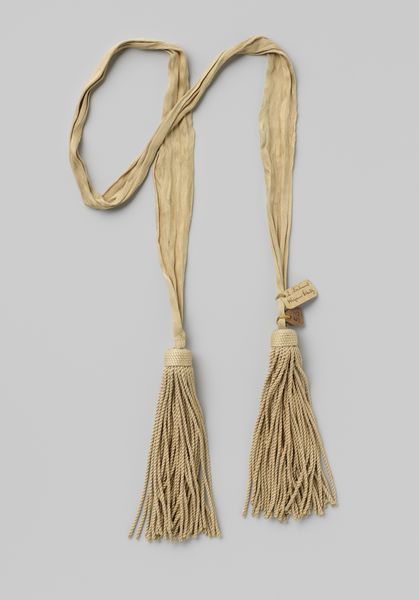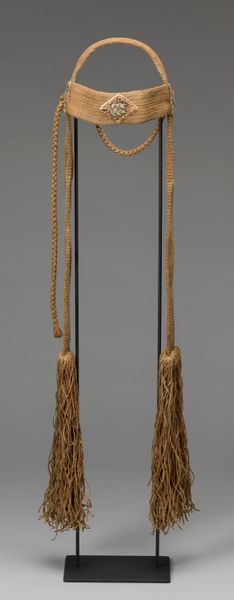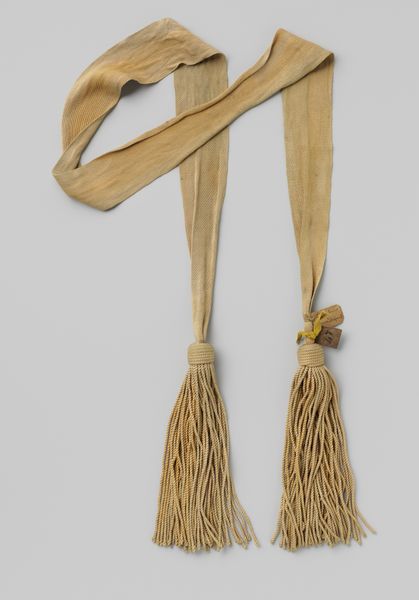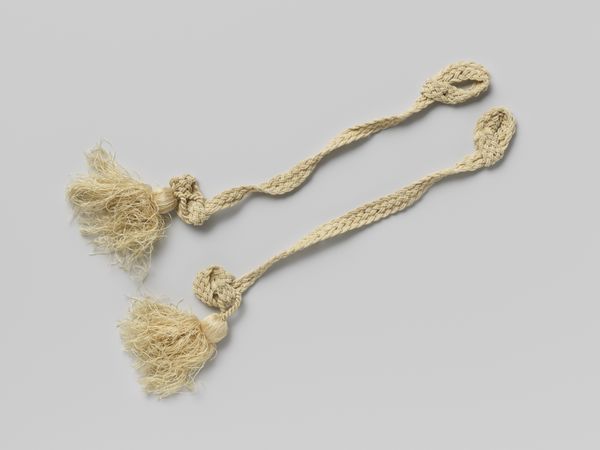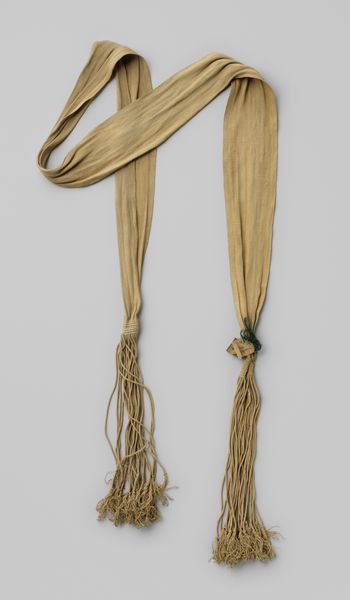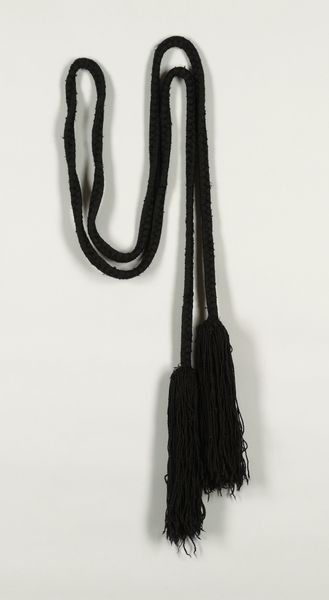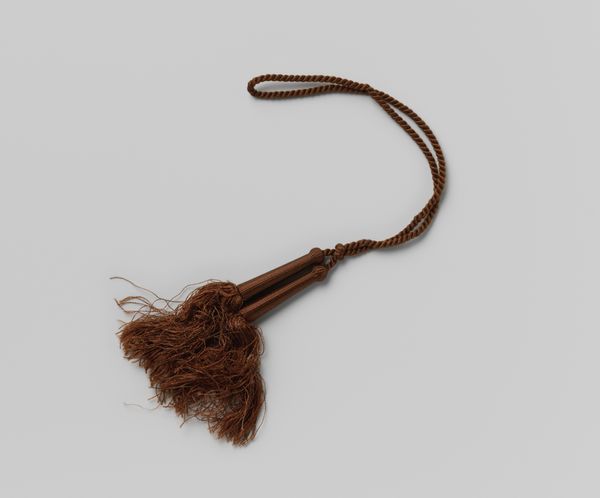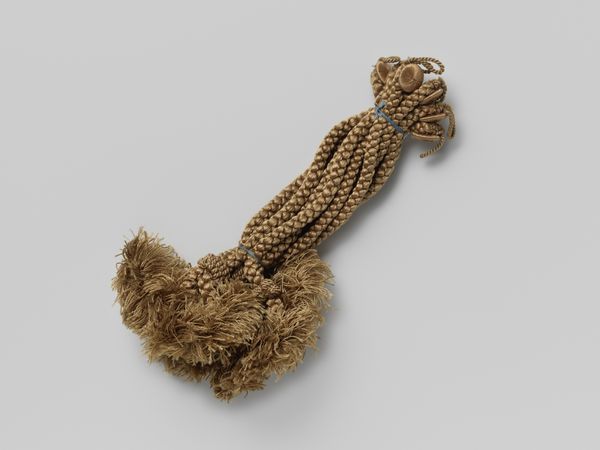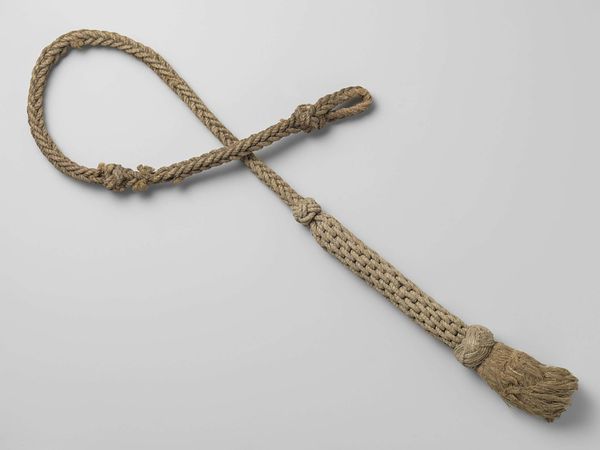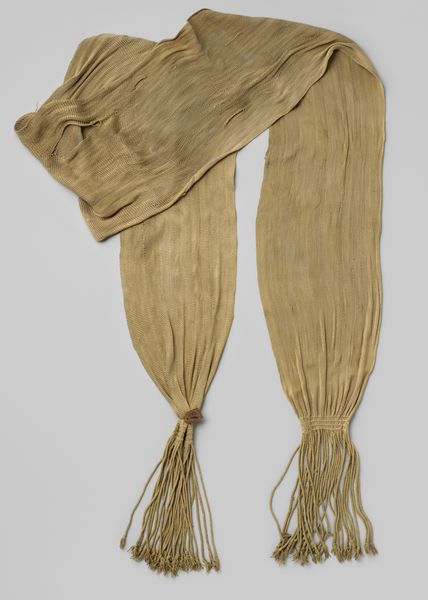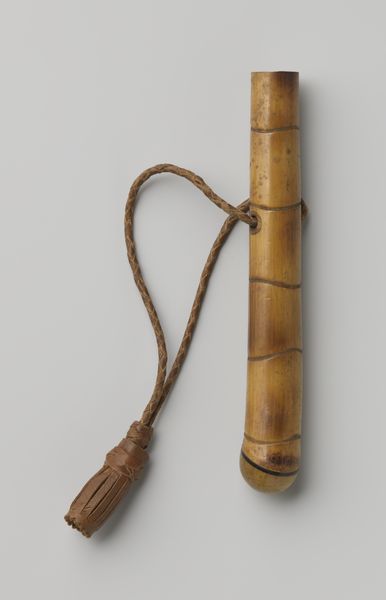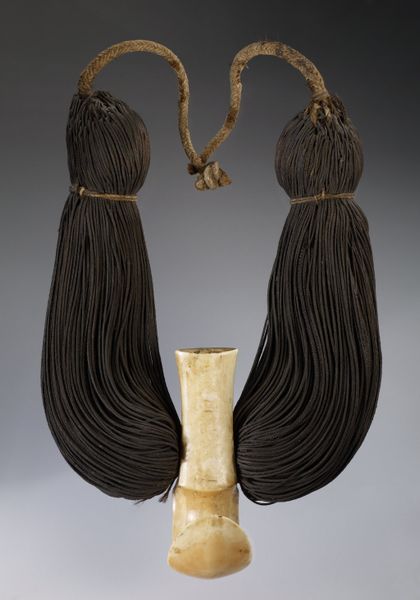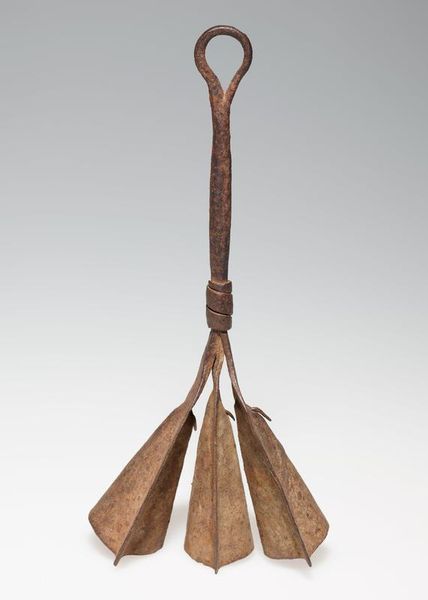
Sjerp M. 1815 met kwasten M. 1860, voor officieren leger (vrijwillige jagers?) schutterij of mariniers c. 1815 - 1860
0:00
0:00
fibre-art, textile
#
fibre-art
#
textile
#
historical fashion
Dimensions: width 88.5 cm, height 7 cm, depth 62 cm, length 160 cm, width 10 cm
Copyright: Rijks Museum: Open Domain
Editor: We're looking at a sash, dating from around 1815 to 1860, its title translates to “Sash M. 1815 with tassels M. 1860, for officers army (voluntary hunters?) militia or marines.” It’s a delicate-looking textile piece. What kind of stories do you think this object holds, considering the time period? Curator: This sash presents a fascinating glimpse into the shifting socio-political landscape of the Netherlands during the 19th century. It makes you think about the civic role of citizens in the military at the time. Consider the fact that it could belong to a number of groups, from the army to the militia. That lack of clarity hints at the fluidity of national identity and military service during this period of rebuilding after the Napoleonic era. What does its worn state tell us? Editor: Well, the wear and tear speaks to the practical purpose it served, yet the elegance of the tassels suggests a certain level of status or ceremony. Do you think this points to tensions or contradictions within the social hierarchy? Curator: Precisely. This object's ambiguity highlights the evolving role of the citizen soldier, where traditional markers of status intertwine with new forms of civic participation. The officer isn’t from the nobility anymore. This textile can prompt discussion about evolving class structures and national pride in a period defined by dramatic social upheaval and revolution across Europe. Who had access to military office at the time? Editor: It sounds like something so seemingly simple offers a surprising view into historical societal transformations and power dynamics. I'll definitely remember to look closer at the context surrounding an artwork. Curator: Indeed. Material culture can reveal so much about broader socio-political trends and it's through objects like these that we gain insights into public perception.
Comments
No comments
Be the first to comment and join the conversation on the ultimate creative platform.
